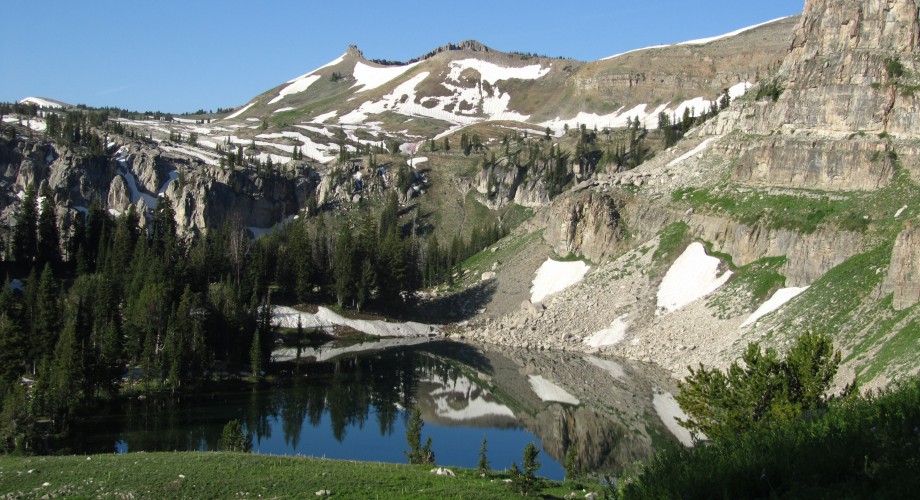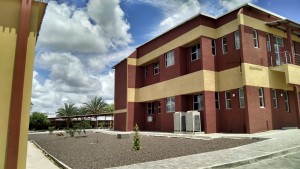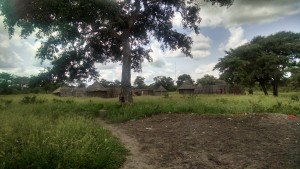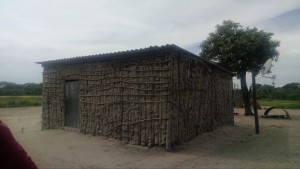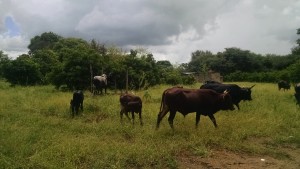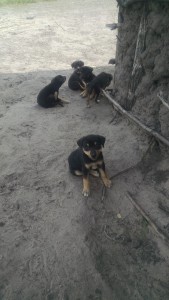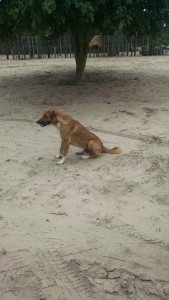On Monday morning I went to the office in Katima for the first time. The project’s office is located at the University of Namibia (UNAM) and the Katima campus is new and very modern. The buildings are either brick or concrete and the campus is laid out nicely. It’s so dry out here that grass can’t grow, so the common grounds are bare or just have a few bushes. Some might think that it makes the campus look dingy but I disagree; you just have to look beyond the dry, cracked ground. Our office is in a wing next to the largest lecture hall on campus. Although the office is not very big, they have made the most of it with shelves, a computer and printer, and a table that takes up most of the space. There’s also a storage cabinet in the hallway as well as a freezer to store the dried blood spot samples, and a large storage room around the back. The room is a bit crowded, so Kate and I took our conference Skype call from a small room near the bathroom. You make do with what you have. I’ll upload some more pictures when I have the chance.
After getting a brief overview of the office and trying to connect with San Francisco on Skype, Kate and I went to the boardroom where we have our weekly staff meeting. Everyone starts work at 8 am in Namibia and knocks off at 5 pm (with one hour for lunch). Ideally, what should happen on Mondays is that everyone comes in at 8 am, packs the trucks (they are called bakkies here, like in South Africa) and gets to the staff meeting at 8:30. Note the word “ideally”; I think this is a rare occurrence. We went through introductions and the normal business. There are multiple projects going on in our office and the staff meeting is the only time that everyone is together to hear what the other projects are doing. The meeting was done in an hour and then we broke to get to the day’s work. Our teams weren’t quite packed and as it became 10 then 10:30 am, I wondered if we would ever leave the office. But then Kate said that they actually were faster today than other days and she thought that things were getting faster. I guess I have to remember the second rule of field work: low expectations.
Eventually we got on the road and headed out. Namibia is big! Even though we are only working in a part of the Zambezi region, there is a lot of driving involved. The closest study area to our office is about 50 km away and the farthest reaches are more than 120 km. The main roads are paved, but some of the smaller ones are dirt so the driving is slower. It can easily take an hour or more to get to a village, in each direction. With an 8 hour work day, that means about 6 hours in the field to investigate a case, which is not much time. The travel distance is definitely an obstacle.
During these first few weeks, the two teams have been going to the same site and working together to investigate a case, but soon enough they will be going on their own so we can investigate more cases each day. Each team consists of a team leader or who organizes the work and decides which cases to investigate when, a nurse who conducts the rapid malaria tests and collects the dried blood spots, and a driver who also conducts some of the investigation. Today we were doing a second visit for a case that the team started the previous week. Some of the people who lived nearby were not home when the team first came and so we try to visit 2 or 3 times to capture everyone who lives in the area. We got to the area and the teams got to work, going to households and asking if the residents were there today. My and Kate’s job in the field is more supervision than anything else. Although English is the official language of Namibia, most people speak several languages and especially in the north and more rural areas, some people don’t speak English fluently enough for me or Kate to interview them. That means we are kind of useless when it comes to some of the study activities. But we help in setting up the tables and chairs, the nurse’s testing station, and making sure that all forms get filled out correctly.
Before the study started, several teams spent months traveling around the study area, recording the GPS coordinates of all of the houses in each enumeration area and assigning an ID number to them (we call it a GR-ID for geographic reconnaissance). Everyone who lives in those households also go the same GR-ID sticker put in their health passport. Theoretically, when a person comes into a clinic in our study area and gets diagnosed with malaria, the nurse completes a case investigation form, which includes a space for the GR-ID, then enters the data into a tablet that gets uploaded to a rapid reporting system that UCSF designed for the Ministry of Health. Every day our team leaders download the newly reported cases and pick one to investigate. Because the nurse entered the GR-ID into the rapid reporting system, we automatically have the GPS coordinates of the case and can locate their house easily. Of course, this rarely happens. About one third of the cases do not have a GR-ID associated with them.
Here’s a picture of a pretty typical village in our study area:
Most people build their own houses out of sand, dirt, trees and water. It must be a lot of work.
When we do not have a GR-ID associated with a case then we have to drive to the village and ask around until we find the person or find someone who knows the person and can direct us to their house. This can take some doing, but for the most part the villages are small and most people know their neighbors. It is a time consuming process though. For every index case from the health facility, we hope to interview and test (or treat) everyone who lives in that house plus the 6 houses which are closest to it as the crow flies. If the houses do not have a GR-ID, then the driver from our team will go around and make a map by hand then assign a GR-ID to the house. We have a portable QR printer with us so we can print the GR-ID barcodes in the field and post them in the houses and health passports.
When the GR-ID has been assigned (or is already there) and someone is home, then the driver will talk to the head of the household and get the names, ages, and genders of everyone who lives there (and by lives there, we mean the people who eat their meals there and spent the majority of the nights per week sleeping there). Many times an entire village will be composed of a single large, extended family so a family member might sleep in one building but eat their meals in another one. Or they eat at one building a few times a week and at a different place the other days. Sometimes it is very difficult to determine where someone lives.
Another challenge is that everyone has multiple names: there is their Christian name, their tribal name, and sometimes multiple surnames. So if you go and ask someone “do you know so-and-so”, they might know the person but not recognize the name. And it goes without saying that there are no addresses here; there aren’t even street names for the most part, except for the major paved roads. The villages aren’t even labeled in any way; the local people just know what places are named.
Many people out here herd cattle and goats. We see them every day, often times hanging out on the road so that you have to slow down and honk the horn to get them to move.
There are also dogs everywhere (and a few cats). I see puppies all the time. I want to pet them, but I refrain because I am afraid of getting fleas or mange. But they are so cute!
Needless to say, and the moral of any public health project, it is easy to write a protocol in San Francisco or somewhere else in America, and it is quite another thing to implement it in the field. There are always many obstacles that you don’t expect or couldn’t have predicted. All you can do is make the most of it and do the best you can.
Anyway, things never go as smoothly as one would hope, but you just have to roll with the punches and celebrate the small victories.
According to Kate, the teams have been getting a lot better at their daily tasks and the work is starting to flow better. I shadowed all of the team members and had them show me what they were doing. I know I slowed them down a bit, but they were all very nice and translated things back into English for me. When we had some free time, Kate and I would chat about how things were going and all of the additional things needed to be done to get things running more smoothly. Our to-do list seems never ending and every time we cross one thing off the list, we add at least three more.
Despite how much more there is to do, the teams are getting good work done. They are following the study procedures, asking questions when they don’t know what to do, and filling out most of the forms correctly. There’s probably not as much attention to detail as Kate or I would give, but considering that some of our staff had never used a tablet and didn’t know how to search the internet before they started working on this project, they have come a long way.
We reached a good stopping point around 4:30 so we packed up everything and headed back to the office. Everyone was tired by the time we got back and quickly unpacked then left. Kate and I went back to her place and took a few Skype calls with people in San Francisco then caught up on email and did a few other work related things. We made dinner while on Skype and finally at 10 pm we called it a night.

